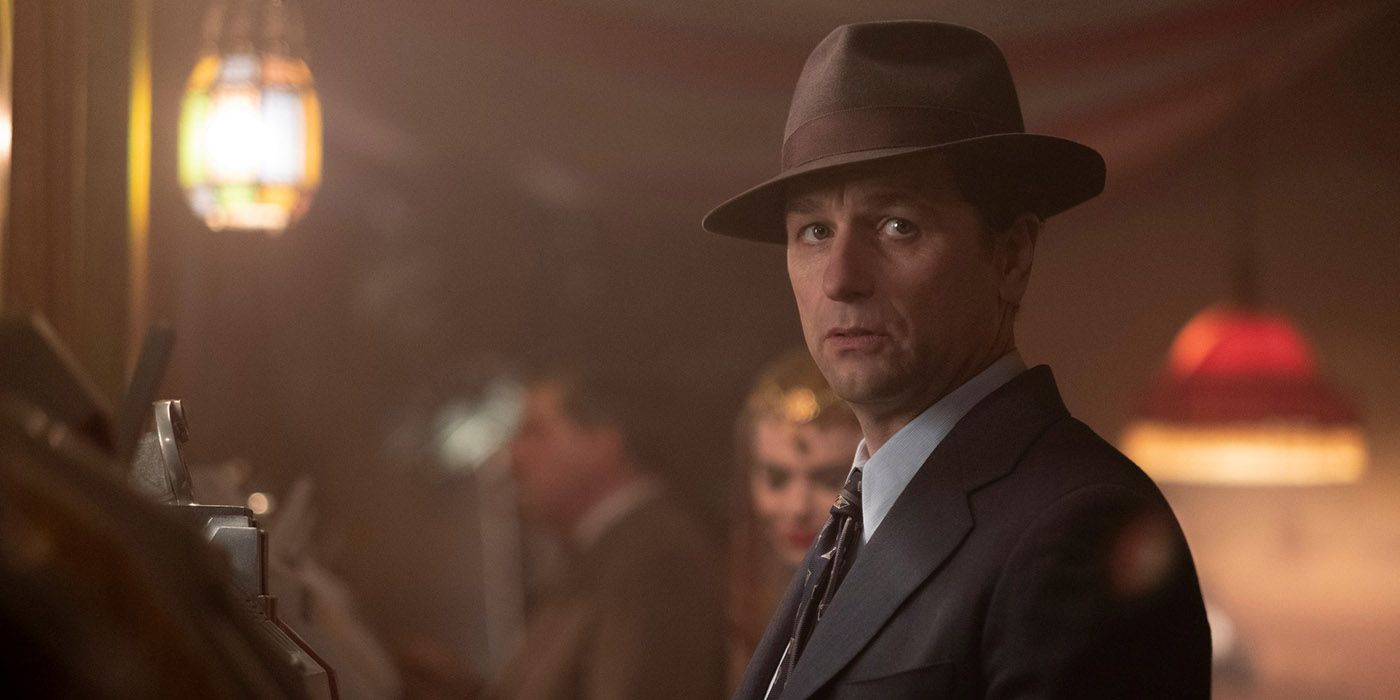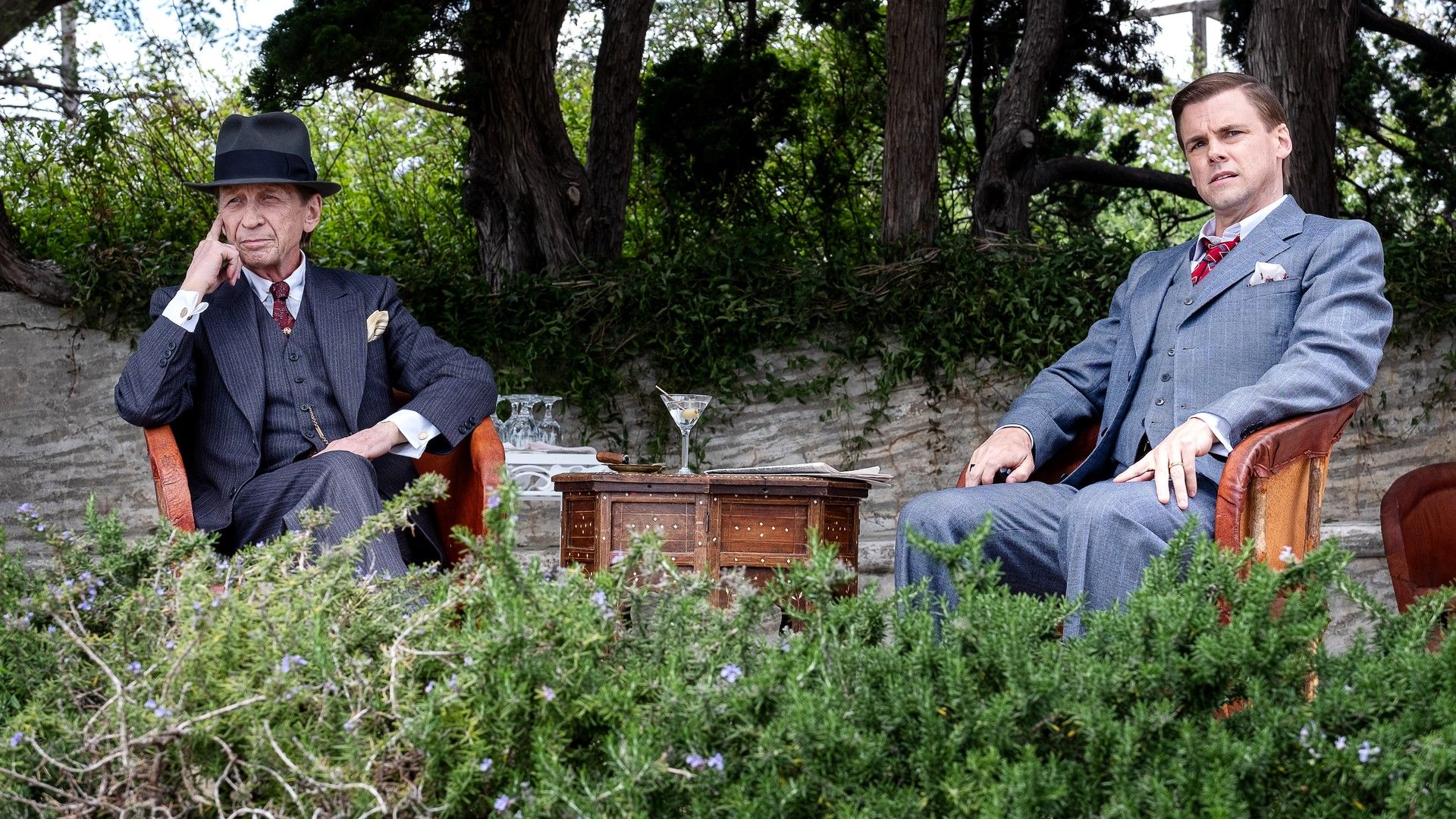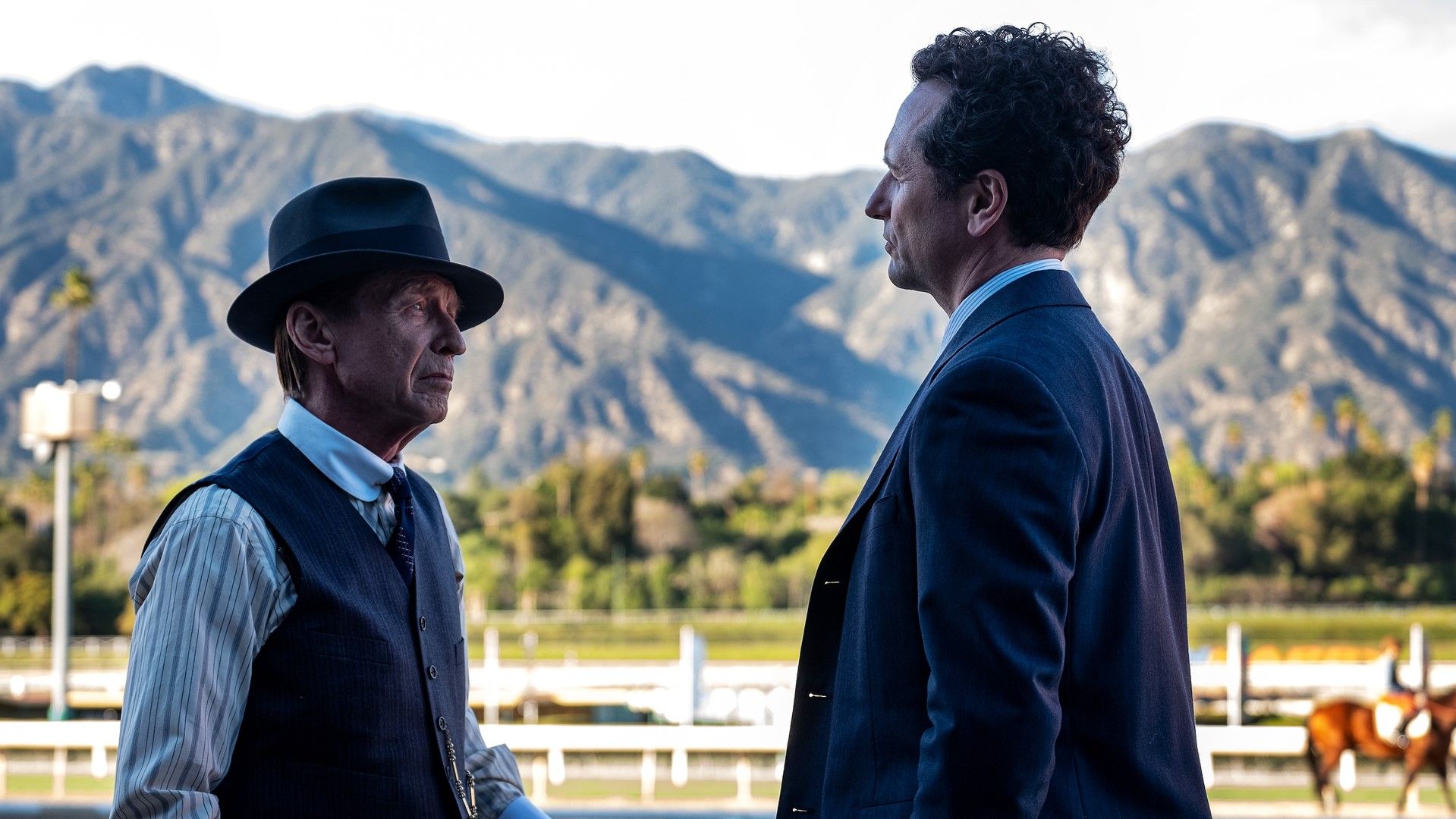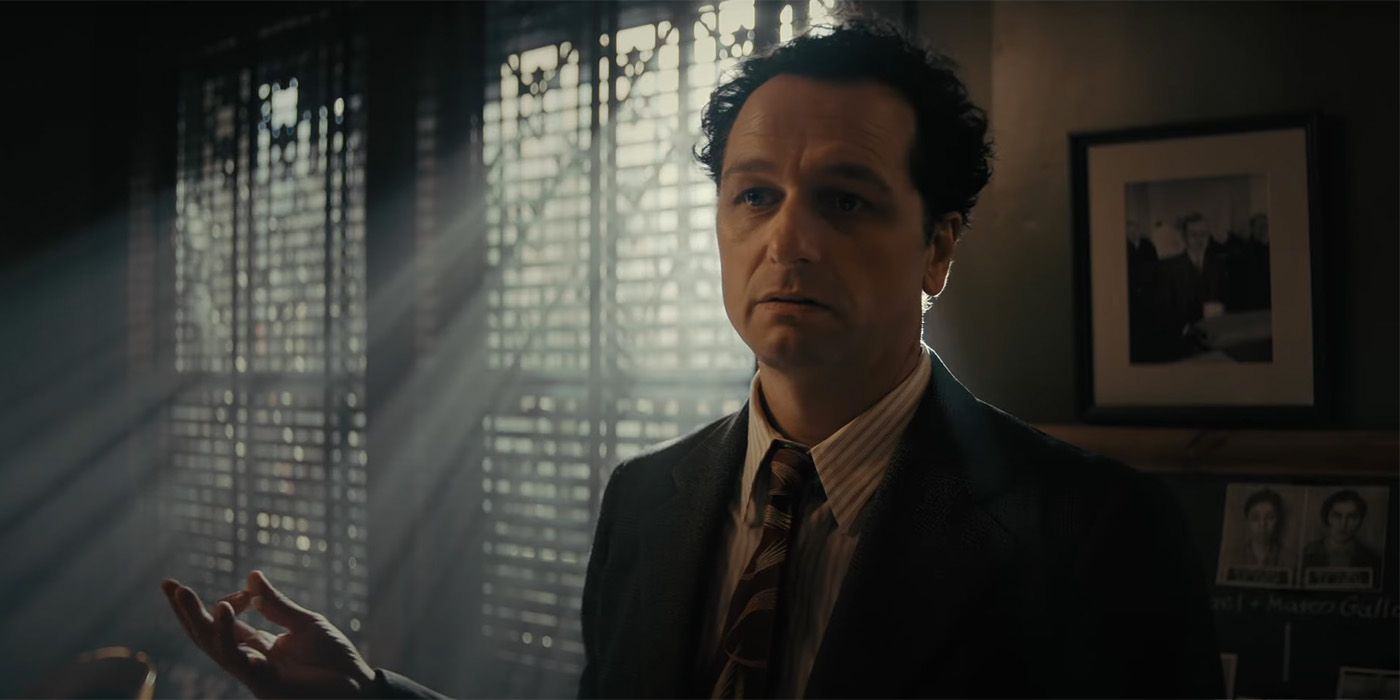HBO''s Perry Mason returns for its second season on March 6. The reboot of the classic legal detective show is set in 1930s Los Angeles, as were the original novels, and draws loose inspiration from some of the more lurid headlines of that time. Season one took on the story of Aimee Semple McPherson, the superstar radio preacher who was reported missing, and was later suspected of faking her own kidnapping. Not that many details have been released about the second season, but there's enough to confidently guess that this time, Perry Mason (played by Matthew Rhys) will get wrapped up in a fictionalized version of the Greystone Mansion murders. These deaths are the subject of ongoing fascination, as one the victims was a member of one of Los Angeles' wealthiest families, the Dohenys.
The press kit for Perry Mason lets us know that the season is kicked off when "the scion of a powerful oil family is brutally murdered," and that after Mason and his team take up the criminal defense of the prime suspect, they "uncover far reaching conspiracies." Casting announcements list Paul Raci (Sound of Metal) as "Lydell McCutcheon, a self-made power player who made his fortune in oil." Tommy Dewey plays Brooks McCutcheon, who "questions whether he has the talent to rise to the heights of his father."
Who Was Edward Doheny?
A self-made California oil baron might bring to mind Daniel Plainview, from Paul Thomas Anderson's There Will Be Blood. That movie was loosely based on Upton Sinclair's novel Oil!, which was loosely inspired by the life of Edward Doheny. Doheny, like Plainview, started with nothing. The son of Irish immigrants, he came west from Wisconsin to prospect for gold and silver. He had some success, played capitalist games, made connections, and in the 1890s found himself situated in Los Angeles, where, as the story goes, he was inspired to enter the oil business when he saw the tar being shipped from the La Brea pits.
Into the first decades of the 20th century, Doheny's oil holdings expanded across California and Mexico, and he would become, for a time, the wealthiest man in America. He maintained a reputation as a benevolent industrialist, successfully obscuring the ruthlessness with which he ran his business, particularly in Mexico. But in the 1920s, it began to unravel.
Doheny was implicated in the Teapot Dome scandal (a name that's familiar to anyone who went to high school in the United States). Albert B. Fall, the central figure in the scandal, was a friend of Doheny's going back to his prospecting days. Fall had become President Warren Harding's Secretary of the Interior. Teapot Dome was one of several oil fields owned by the U.S. Navy, which used this petroleum to fuel its ships. But all these fields had to be drilled, and Fall was in charge of awarding those jobs to private contractors. The plum gig of drilling Elk Hills, another naval oil field, was awarded to Edward Doheny's company, without competitive bidding. At the same time, Doheny gave Fall a $100,000 interest-free loan. The cash was actually hand-delivered in a black bag by Doheny's son, Ned, and Ned's longtime friend and assistant, Hugh Plunkett.
The Night of the Murders
This bribe was paid in 1921, but while Fall was the subject of senate investigations for years, it wasn't until 1928, with new charges brought against Edward Doheny, Sr., that Hugh Plunkett was subpoenaed to testify about his role in the payoff. Plunkett had maintained his very close relationship with the Doheny family, and in fact had been instrumental in overseeing the construction of Greystone Mansion, the 55-room estate constructed as a gift from Edward Doheny for his only son, his wife, and their five children.
A lot of the information about what happened next comes from the accounts of the Doheny family physician, Dr. Ernest Clyde Fishbaugh, who has come to be seen as a questionable source. According to the doctor, as the trial drew near, Plunkett began experiencing severe mental health issues. Fishbaugh and Ned Doheny urged Plunkett to check into a sanitarium to rest. Many have noted that this could also allow him to avoid testifying against the family. But he refused. On February 16, 1928, Hugh Plunkett showed up at Greystone Mansion and let himself in using his own key. In a guest bedroom, Plunkett and Ned Doheny had a confrontation of some kind. According to testimony, the sound of gunfire drew other members of the household, who discovered that both men had been shot in the head. Both would die from their injuries.
One of the first investigators to arrive at Greystone was LAPD forensic investigator Leslie White. The story he heard from witnesses was consistent. Hugh had shown up distraught, and had warned everyone but Ned to "keep away," and had likely been the one with the gun. But there were many things about the story that never sat right with White, who always thought that the testimony sounded rehearsed. There was the three-hour delay between the time of the deaths and the time the police were called. There was powder burn evidence that suggested that Plunkett had not been shot at close range. Nevertheless, over White's objections, the district attorney quickly closed the investigation. The official ruling was that Hugh Plunkett had killed Doheny and then himself.
White would later leave the police force and become a writer. He would eventually meet Raymond Chandler and become one of the many inspirations for Philip Marlowe, the detective who starred in several of Chandler's novels. In The High Window, Marlowe remembers working on what is clearly a fictionalized version of the Doheny murders. In that story, there was a murder-suicide, but the police and the district attorney lie about who had killed whom to avoid embarrassing a rich family; in reality it was the wealthy scion who had killed his assistant and then himself.
If it was really Ned Doheny who fired the gun, we'll likely never know. This has become just one of several alternate theories about what really happened that night. Others think that Doheny and Plunkett were both murdered to prevent them from testifying. Some believe that the two men were having a love affair and were killed by Ned Doheny's wife, Lucy. But it's all just guesswork.
Edward Doheny died soon after his son, having become a recluse. Lucy remarried, and remained in the house where her husband was killed for many more years. The Doheny family eventually sold the Greystone Mansion, and it came to be owned by the city of Beverly Hills, which makes it available as both an event hall and a filming location. You may recognize the mansion as Wayne Manor in Batman and Robin, or the home of the elder Lebowski in The Big Lebowski. That movie, oddly, could not make use of the mansion's basement bowling alley, but one movie that did was There Will Be Blood, which took off from the same real life source material, but made the house the site of a very different murder.
Perry Mason will likely use these events as a very loose inspiration, as it did with the story of Aimee Semple McPherson. After all, there was no trial, and Perry Mason needs an innocent defendant. But there's something iconic about the characters involved: a self-made man, and a son who lives in the shadow of his father's accomplishments and corruption. You can change the names, and even the details, but it's still always kind of the same story.




